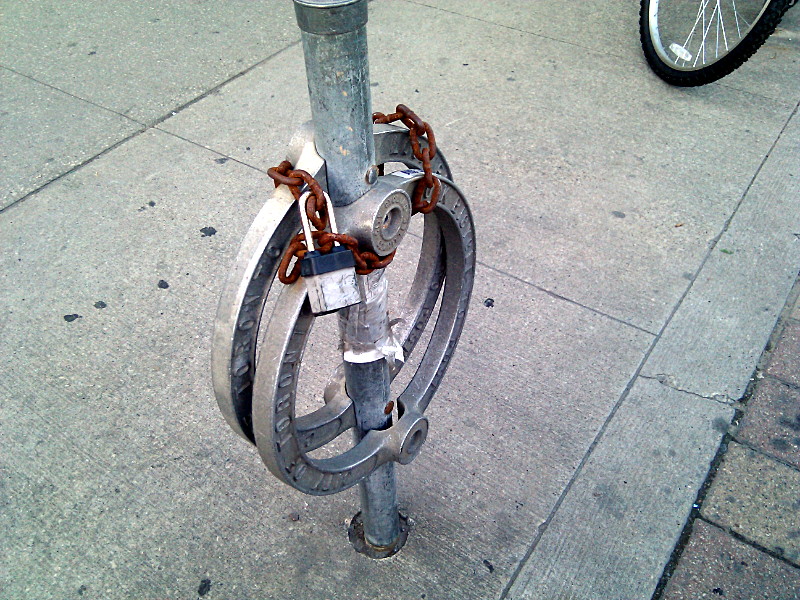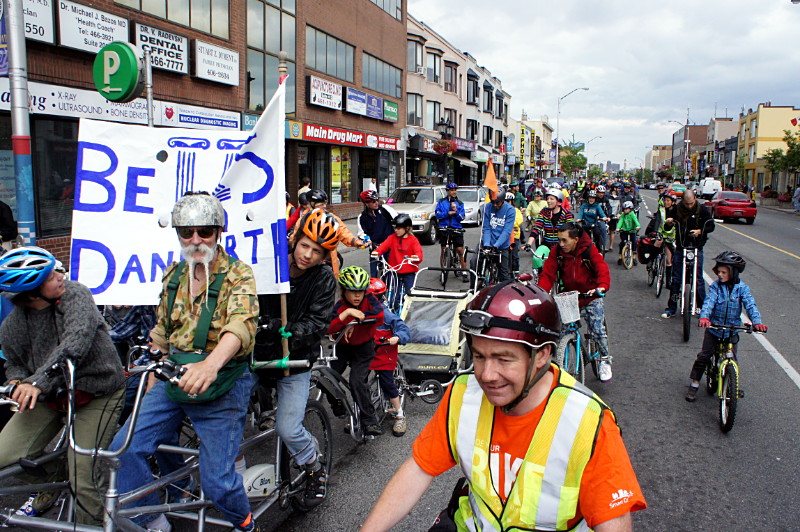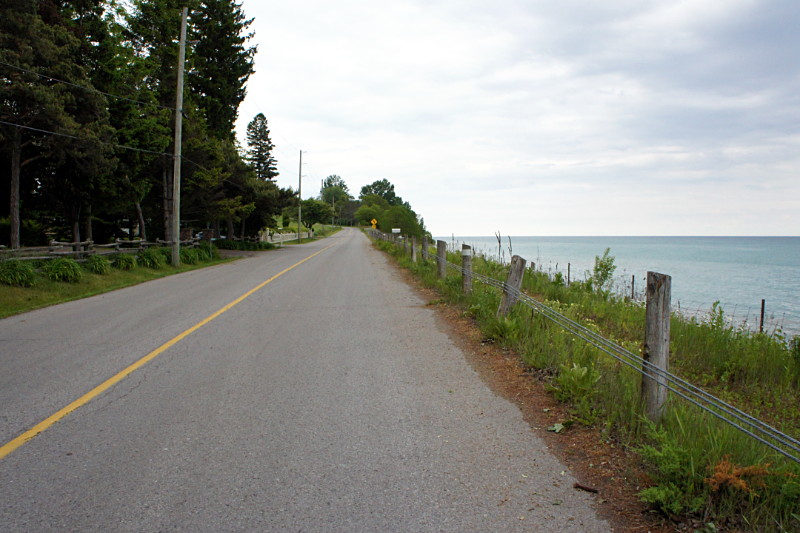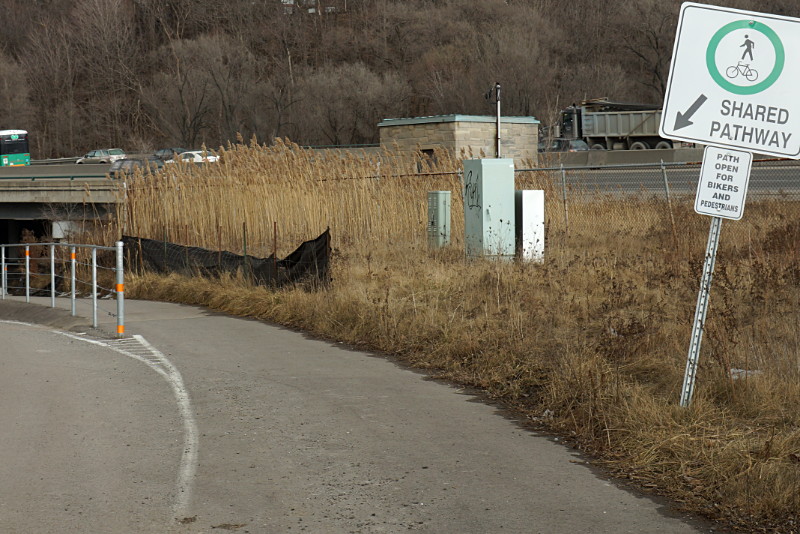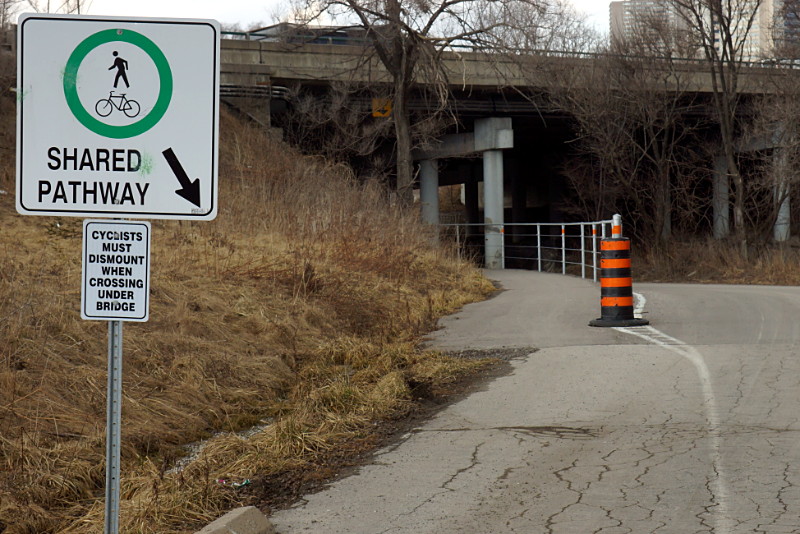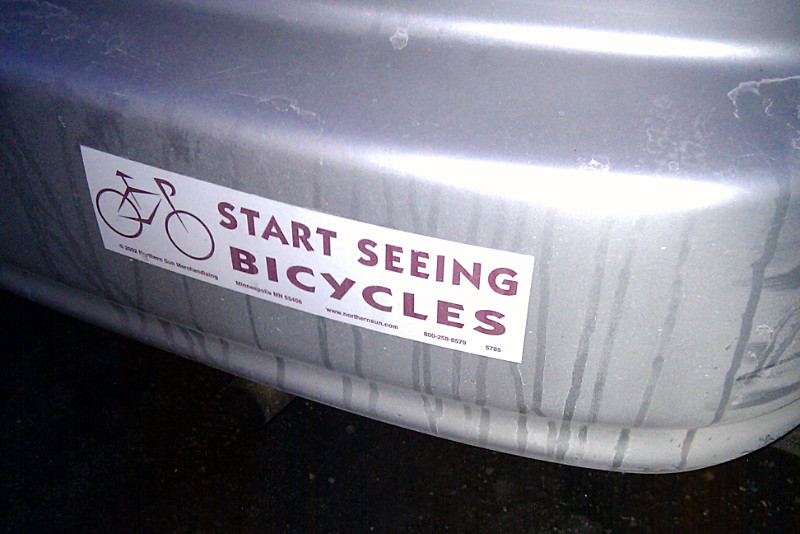The new parking garage at Charles & Benton in downtown Kitchener has a secure bike parking corral. Similar to Toronto’s bike stations, Kitchener has two of these facilities downtown now with at least one more planned. Where access to Toronto’s bike stations comes at the cost of a daily fee or monthly membership, Kitchener requires only a one-time $10 deposit.
My hotel last weekend was directly across the street from the Charles & Benton facility, so I thought I’d give it a shot for locking up even though the city doesn’t recommend using the secure corrals for overnight storage. I’d rather take my chances in a secure facility than leave my ride in the hotel’s bike rack tucked away in the darkest corner of its own parking garage. By the time I picked up my pass at City Hall and wheeled over to the garage on Friday afternoon, the sun was out and it was a gorgeous day, in contrast to the mudstorm I’d ridden through just a couple of hours earlier.
Here’s a quick look at the still-shiny-new garage and corral. Cyclists get a separate curb cut and ramp into the garage (between the bollards on the right side of the picture), so there’s no waiting in line with cars or squeezing around lift gates:
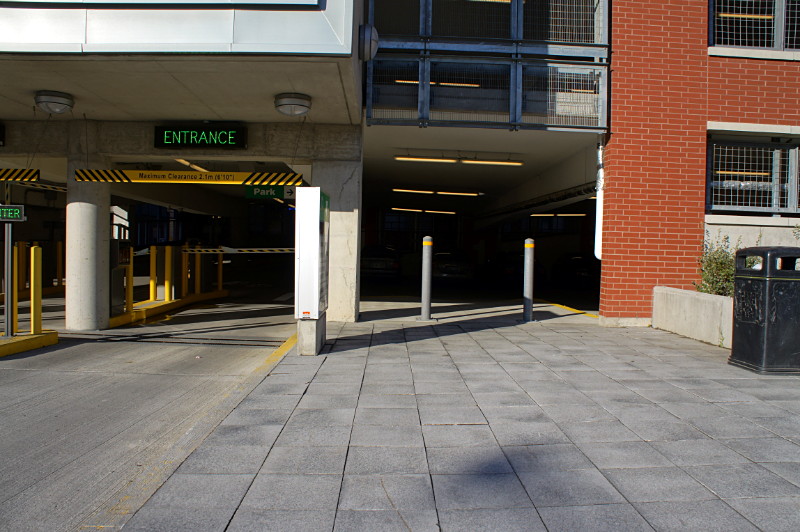
Here’s the sign at the front of the secure corral, showing cyclists how to use it and how to get access:
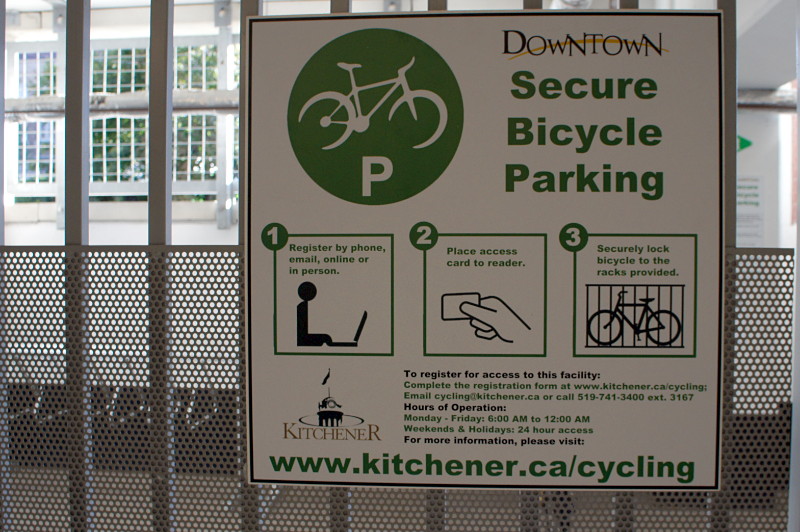
Here’s my bike, complete with stylishly dangling shopping bag, ready to be locked up while I go spend the afternoon on the town:
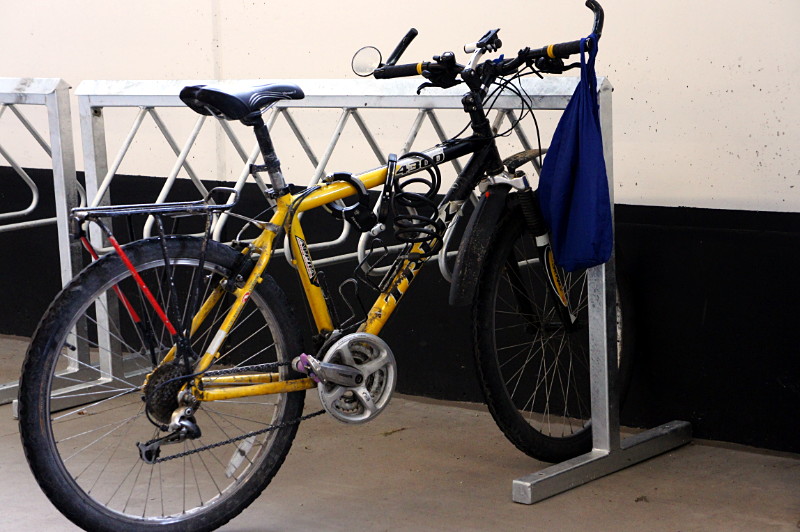
Here’s a sign assuring cyclists that the crowding problems will soon be alleviated. It was unclear to me if the promised additional racks were already in place or if there were more yet to arrive:
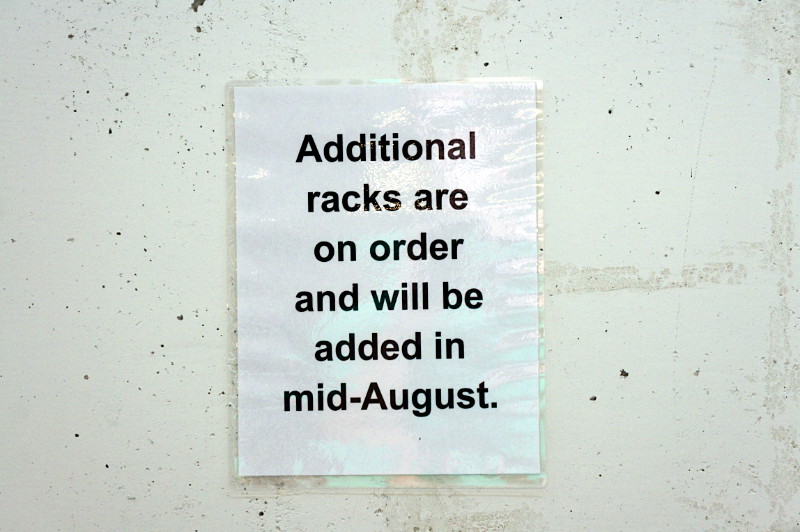
And here’s a shot of my bike locked up among all the others in the corral. This was as crowded as it got all weekend long:
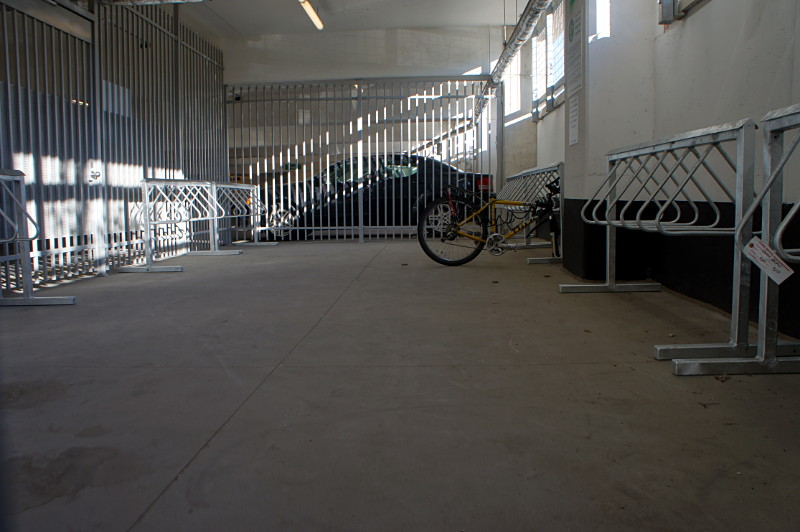
This was 3 p.m. on Friday. Granted, the rain earlier in the day may have kept some people from commuting by bike, but I confess that I expected to see a few more bikes than that. I do know that at least one other person was in there over the weekend because he or she left a water bottle resting upright on the floor beside one of the racks on Sunday morning.
I’m always deeply appreciative of all kinds of good cycling infrastructure—not just bike lanes—and get a little alarmed when it seems underused. If facilities like this are frequently empty, it’s much harder to make the case to maintain them, never mind install more of them. With a rock music festival going on just a block away all weekend, I was keenly aware that my little bike was taking up the equivalent of five parking spots for cars. I’m assuming that the seeming lack of use was from a combination of the weather discouraging cyclists that day and the newness of the lockup which has only been open for a couple of months. Getting access also requires in-person registration during business hours a few blocks away at City Hall. There are a lot of bikes in Kitchener and I’ve got to think that it’ll be more heavily used as word gets out and more people register. I also think that the two big hotels within one block of this new garage should partner with Kitchener to publicize it and make it available to guests on a short-term basis as part of their room fee.
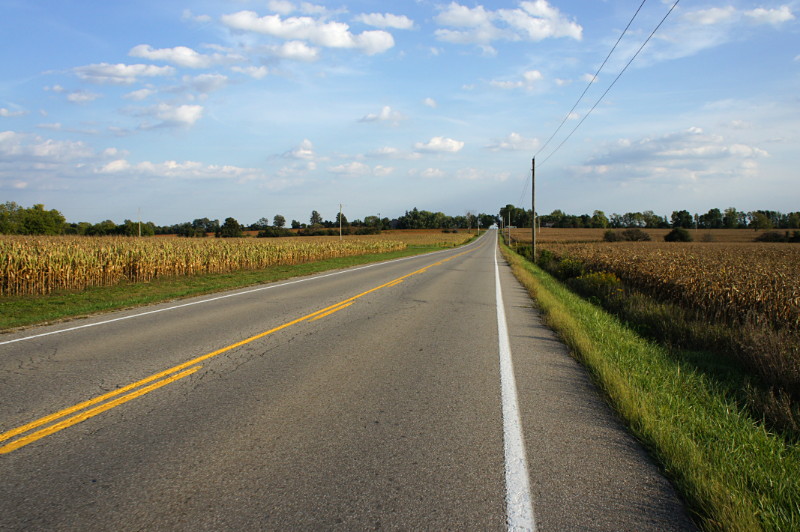
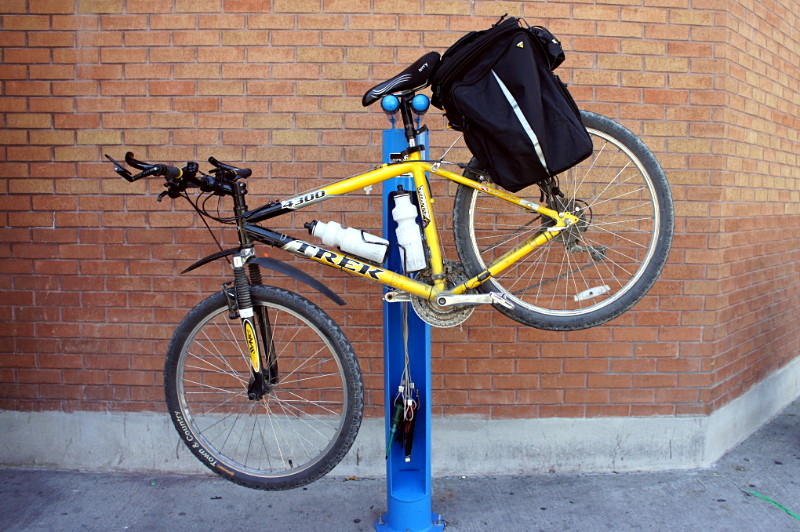
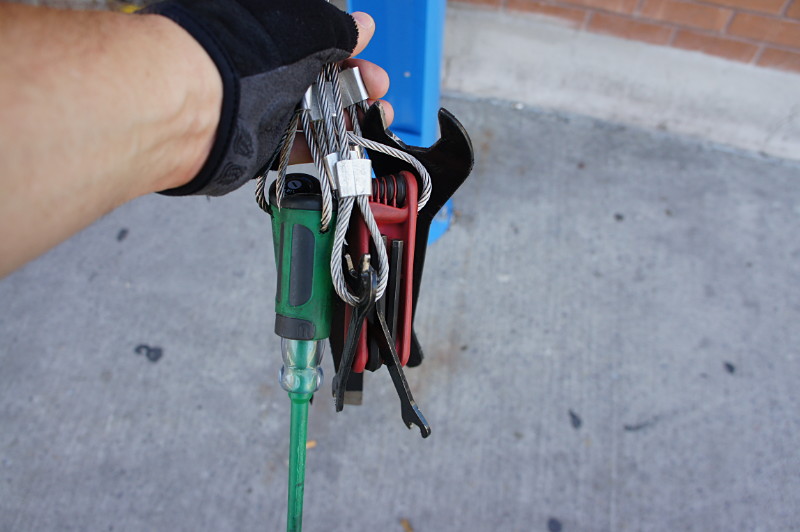
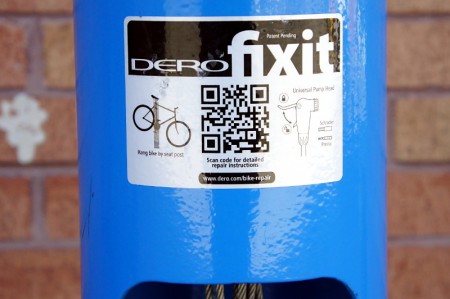 This is the kind of cycling infrastructure that I love: it’s incredibly useful for both casual and seasoned riders and just sits unobtrusively in the background until it’s needed. The only thing missing from the stand is a pump, which is probably the one tool that would be used the most. Susan Sauvé, a transportation planner at the city, told me via email that pumps were originally included with the stands when they were installed in July, but they all broke within a week. The city currently has more durable pumps on order from the manufacturer and hopes to re-install them soon.
This is the kind of cycling infrastructure that I love: it’s incredibly useful for both casual and seasoned riders and just sits unobtrusively in the background until it’s needed. The only thing missing from the stand is a pump, which is probably the one tool that would be used the most. Susan Sauvé, a transportation planner at the city, told me via email that pumps were originally included with the stands when they were installed in July, but they all broke within a week. The city currently has more durable pumps on order from the manufacturer and hopes to re-install them soon.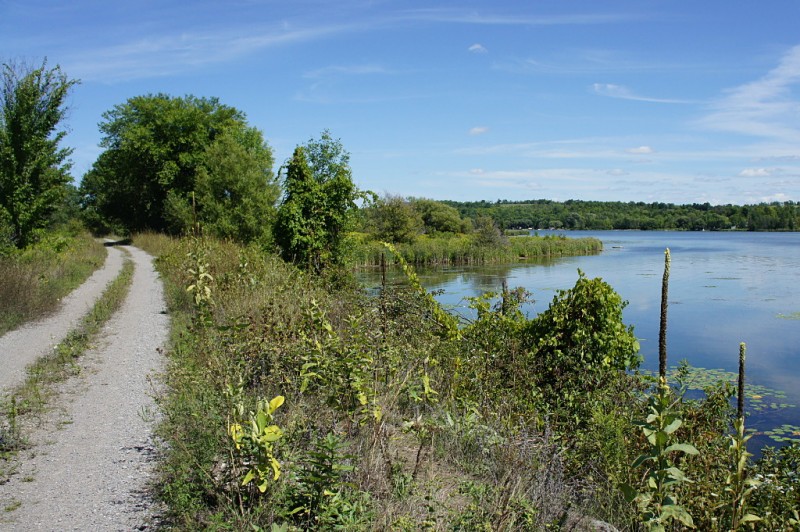
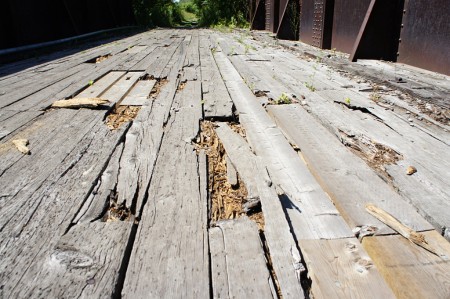 Compared to the Peterborough to Omemee trail, the lack of coordination shows: the route to Hastings is a little more wild and a bit more of a challenging ride. Unlike the smooth wide bed of gravel dust on the Omemee trail, the ride to Hastings is mostly on dirt double-track with some large gravel, loose sand, and other trail hazards along the way. Some of the bridges seemed to be in rough shape, with some surface planks rotting away and exposing holes big enough to see through to the rivers below. The trail is probably smooth as butter when it’s covered with a couple of feet of hard packed snow but it can be a little jarring on a bike in the summer. It’s certainly in good enough condition and offers enough variation for an average cyclist to have an enjoyable trip, but you won’t find any beach cruisers on it. Front suspension on my mountain bike was most welcome by the halfway mark.
Compared to the Peterborough to Omemee trail, the lack of coordination shows: the route to Hastings is a little more wild and a bit more of a challenging ride. Unlike the smooth wide bed of gravel dust on the Omemee trail, the ride to Hastings is mostly on dirt double-track with some large gravel, loose sand, and other trail hazards along the way. Some of the bridges seemed to be in rough shape, with some surface planks rotting away and exposing holes big enough to see through to the rivers below. The trail is probably smooth as butter when it’s covered with a couple of feet of hard packed snow but it can be a little jarring on a bike in the summer. It’s certainly in good enough condition and offers enough variation for an average cyclist to have an enjoyable trip, but you won’t find any beach cruisers on it. Front suspension on my mountain bike was most welcome by the halfway mark.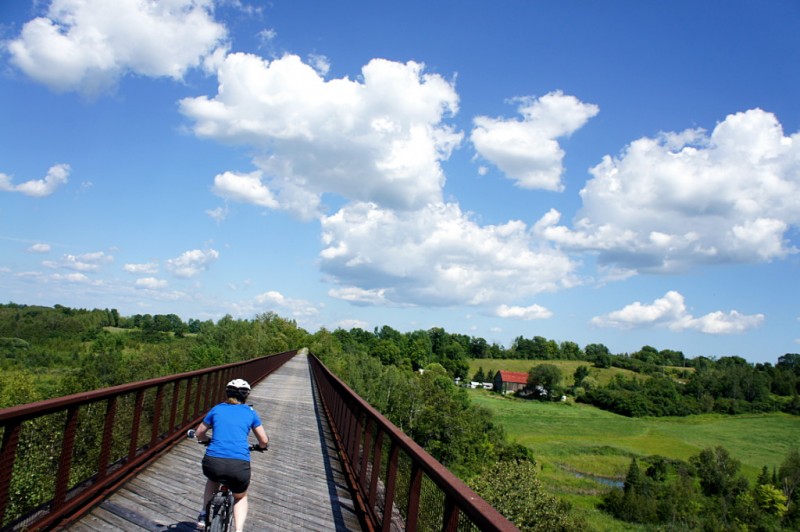
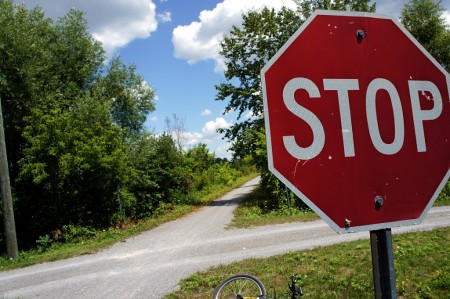 The trail is an easy and relaxing ride for the entire length. It passes a few rural intersections and driveways at grade, while busy Highway 7 and some other driveways are carried over the trail on bridges. The urban intersections in Peterborough are similar to the ones on Toronto’s Beltline, but have curb cuts to actually let cyclists cross at the trail. The trail itself is well-maintained and can be ridden by the most casual of cyclists. Along the way you are treated to views of farms, valleys, and the rolling hills that you are not constantly climbing up and down. That’s the real joy of rail trails: you may be climbing, but the grade is so slight that it doesn’t hurt when you’re going up and it’s like having a slight tailbreeze when you’re going down.
The trail is an easy and relaxing ride for the entire length. It passes a few rural intersections and driveways at grade, while busy Highway 7 and some other driveways are carried over the trail on bridges. The urban intersections in Peterborough are similar to the ones on Toronto’s Beltline, but have curb cuts to actually let cyclists cross at the trail. The trail itself is well-maintained and can be ridden by the most casual of cyclists. Along the way you are treated to views of farms, valleys, and the rolling hills that you are not constantly climbing up and down. That’s the real joy of rail trails: you may be climbing, but the grade is so slight that it doesn’t hurt when you’re going up and it’s like having a slight tailbreeze when you’re going down.